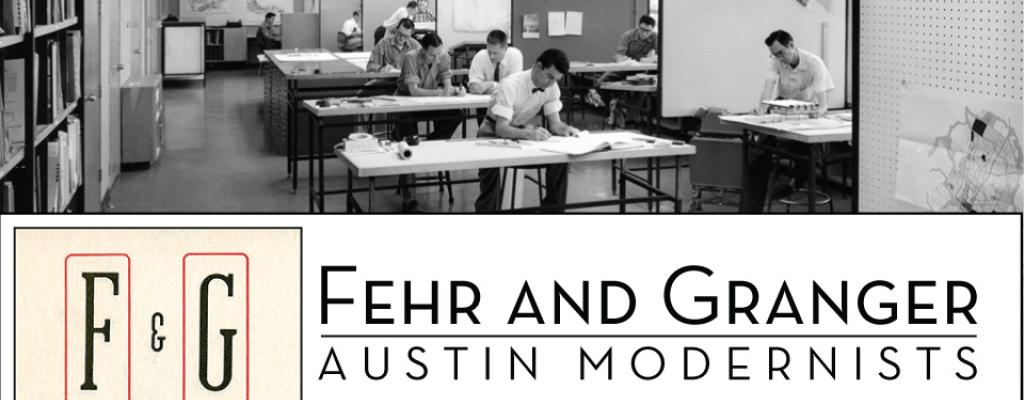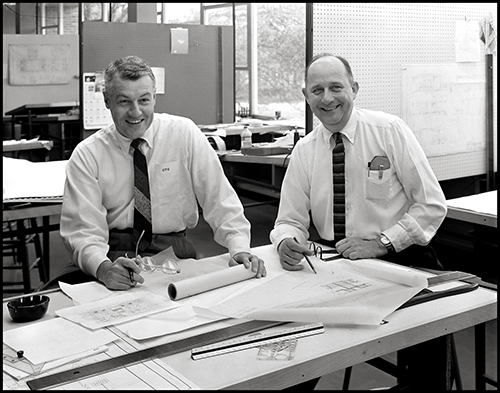
Fehr & Granger: Mid-Century Architects
“Beauty, no matter where or when, should be useful to man.
It should give pleasure to the eye, and most of all, uplift the spirit.”
-Arthur Fehr, 1963
“We try to contribute in some small way a little something of beauty to our physical environment,
and, through beauty, bring a little happiness and pleasure to those who come in contact with it.”
-Charles Granger, 1958

Charles Granger and Arthur Fehr, 1958, DM-58-24725, Photograph by Dewey Mears
Fehr & Granger was an Austin, Texas architectural firm founded by Arthur Fehr and Charles Granger, Jr. in 1946. Working in a Modernist style, the next two decades were highly productive for the esteemed firm. Winning numerous awards, they created inspiring projects that include residential, commercial, educational and ecclesiastical designs throughout central Texas. Arthur Fehr (1904-1969) earned his architecture degree in 1925 from the University of Texas and went on to graduate study at Columbia University, Beaux Arts Institute of Design and New York University. Charles Granger (1913-1966) was an architectural student at the University of Texas when he was hired as a summer intern by Arthur Fehr. After graduation in 1936, he worked for the influential modernist architect, Richard Neutra in Los Angeles, then earned a master’s degree from Cranbrook Academy in Michigan, where he worked as a designer for the famed Eliel Saarinen before returning to Austin, Texas. Mr. Fehr was made a fellow of the American Institute of Architects in 1957. Charles Granger was killed in an automobile accident in 1966 shortly after becoming a fellow to the American Institute of Architects. Arthur Fehr continued to practice under the firm name Fehr and Granger until his death in 1969. The images in this exhibit are only a selection of those related to the work of Fehr & Granger in the collections at the Austin History Center, Austin Public Library.
Home | Residential | Commercial | Educational | Ecclesiastical | Bastrop Park | Map | Resources